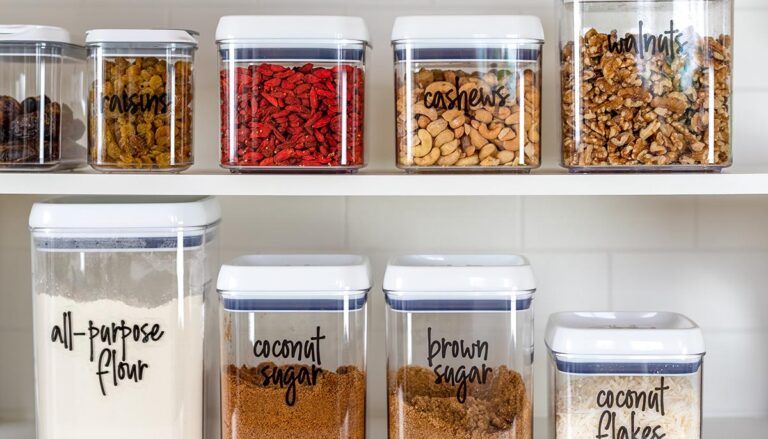It’s time for spring cleaning! Starting with your pantry, it’s time to keep away pesky pests, clean, sanitize and organize your shelves. Here are some easy ways to simplify spring cleaning your pantry.
The best way to clean and sanitize pantry shelves
Start by removing all items from your pantry or cupboards. Now it’s time for cleaning. Vacuum You want to thoroughly clean all of the shelves. Start by vacuuming all the shelves. Next, the most common way to clean is by using a mild detergent mixed with warm water. After cleaning, rinse the shelves by wiping them down with warm water.
Sanitizing your pantry shelves
You may want to take the extra step of sanitizing the shelves. There are two methods to choose from.
(A) You can use commercial sanitizing wipes.
(B) Make your own sanitizer with a mixture of chlorine bleach and water. According to the University of Minnesota Extension, the correct concentration should be one teaspoon of regular chlorine bleach (5.25% sodium hypochlorite) mixed with one quart of water or one tablespoon of bleach for one gallon of water. You can spray or wipe the solution on the shelves and allow them to completely air dry before returning your food items, according to Penn State University Extension.
Organizing your pantry
Experts say stacking bags in your pantry isn’t the way to go. They recommend using stackable containers. Rectangular, airtight plastic containers are often best as they are easier to arrange, move and organize.
Using airtight containers is preferable for items such as flour, sugar, and other items that could attract insects.
Both glass and plastic are the most durable, but if you have children, plastic containers are recommended both due to their weight and being less breakable, CNN reports.
Check ages of food, spices, oils, and more
Start by checking your spices, which should be used within a year of opening. Next, check your cooking in finishing oils, which may have gone rancid by sitting unused, Martha Stewart advises.
Next, check baking supplies. Unopened baking soda is good for two years, while an open box only lasts six months. Baking powder has a shelf life of between six months to one year.
Some types of nuts last longer than others, but walnuts tend to go bad quicker. Long-term storage of nuts is better in the freezer.
Certain flours, such as whole wheat flour, are more perishable than all-purpose flour, white rice, or pasta. These will also store longer in your freezer rather.
Canned foods have a long shelf life, but spring cleaning is a perfect time to shuffle your canned foods by bringing the ones with the nearest expiration dates to the front to be used first.
Inspect and bug-proof your pantry
A common pest for pantries are super tiny beetles known as wheat weevils (also known as grain or granary weevils), rice weevils, and flour beetles, whose larvae are known as mealworms. These various pests feed on grain, wheat flour, rice, pasta, cereal, oats, barley, corn, and quinoa.
The first step is to inspect all the packages, even those unopened, if they are near other infested containers, Good Housekeeping recommends. Throw away all infested food or any food you suspect is compromised.
To keep these pests out, seal any cracks and openings in your pantry. Transfer any of the food sources that these pests go after into impenetrable airtight containers rather than the paper, cardboard, or plastic packaging they come in from the store.
Make sure to clean and sanitize your pantry before putting any food items back.





